However, before hopping on any soapboxes or discussing our new guests, let’s do a quick update on some of the critters from last week.
The bluebirds and brown thrasher with the old nest injury will be long-term guests at LWR, until their flight feathers come back in…which probably won’t be until they molt. They’d rather be free and I’d rather they were free, but without flight feathers, they’re as good as dead outside the songbird flight. The good news is you’d hardly know the thrasher ever had a problem with that leg; he’s using it like a pro.
The black vulture with the droopy wing did, as I suspected, have an old injury; it was not fixable, leaving us no choice but euthanasia.
The same day the robin came in, another nestling pine warbler arrived. He was alert and eating well, with no signs of injury. He was found on the ground with no nest in sight and his finder got him to LWR within an hour of finding him. All seemed promising. But within eight hours of intake, the little fellow just died, for no apparent reason. Who knows what happened to him before he was found? We’ll never know.
I’m pretty sure the only reason LWR was even contacted was that the sib died that day. Well, DUH. How many times have you heard me say that there’s only a 12-24 hour window for cat-attack victims? The bacteria from the cat claws/saliva, untreated, in combination with being subjected to the same torture this bird suffered…yeah, I’m not surprised at all that the sib died.
I point-blank told the finder that the bird looked and smelled awful and I wasn’t sure he’d survive a bath. The reply? “Oh, I tried to bathe them but I couldn’t stand the noise.”
People, I CANNOT stress enough the importance of getting birds to properly licensed individuals ASAP. Had both birds come to LWR the day they were found, or by the next day at the latest, the sib might still be alive; this baby wouldn’t have lungs full of the same crap diet he’s wearing—and probably water from his finder’s attempt at a bath, as bathing a baby bird is also something best left to trained individuals—and he damn sure wouldn’t look like he’d been dipped in batter preparatory to being deep-fried.
Once more: IF YOU FIND A BABY BIRD CALL A REHABBER IMMEDIATELY. That bird’s life depends on your promptly contacting a person TRAINED to ensure it has the best possible chance at survival.
Once again, people let ego take precedence over the welfare of the bird when they found this fledgling brown thrasher. For a WEEK, the bird was fed some sort of crap diet, resulting in severe metabolic bone disease, or MBD. Basically, it’s the result of a drastic calcium deficiency, making the bones so fragile that even handling the bird can break them. The bird will be in pain that increases in intensity as the disease progresses. Sometimes, if caught early enough, it can be reversed, but not in this case. The feathers on the poor bird showed clear signs of malnutrition; his legs were useless; his feet were “clawed” like a stroke victim’s hands—and when I carefully handed him to Richie to compare his body mass to that of the healthy pre-fledgling thrasher, he immediately said, “The younger bird is heavier.” That’s because the healthy bird has been getting a proper diet and his bones are strong.
Calling after a WEEK of torturing the bird and claiming to have “researched intensively” just doesn’t cut it, okay, people? If you “researched intensively”, you surely saw multiple warnings that possession of wildlife without a permit is illegal, yet you chose to ignore those warnings and feed the bird a totally inappropriate diet until you’d so screwed it up that euthanasia becomes the only humane option—and THEN a miracle occurs and you develop a conscience and the ability to locate a rehabber? I call BS. Keeping a bird you KNOW should be with a trained professional is nothing more than stroking your own ego, at the expense of the bird—and it was truly expensive; it cost him his life.
And just what is the bird? I think it’s a chickadee. As the feathers continue to come in, that’s what it’s resembling more and more!
This poor fellow wasn’t in good shape; although x-rays revealed no fractures, his chest was scraped raw and the x-rays did show a large white mass in the stomach area that Peggy and Richie said could be blood. Given the paleness of the bird’s mouth internal bleeding seemed likely but the severity couldn’t be determined. We opted to give him a little more time, but the poor fellow died on the way home.
To my surprise and delight, when I opened the box containing the “killdeer”, they turned out to ne nestling common ground doves. I rarely see common ground doves in rehab, but they are typical sweet doves—just very, very small!
And finally, first thing this morning a call came in about a nest of baby birds found AFTER a bush had been cut down. The cutter didn’t think to check for nests until it was too late. Thankfully, the cutter immediately made arrangements to get the birds to LWR, despite a lengthy drive to do so. They appear to be cardinals and are eating well.



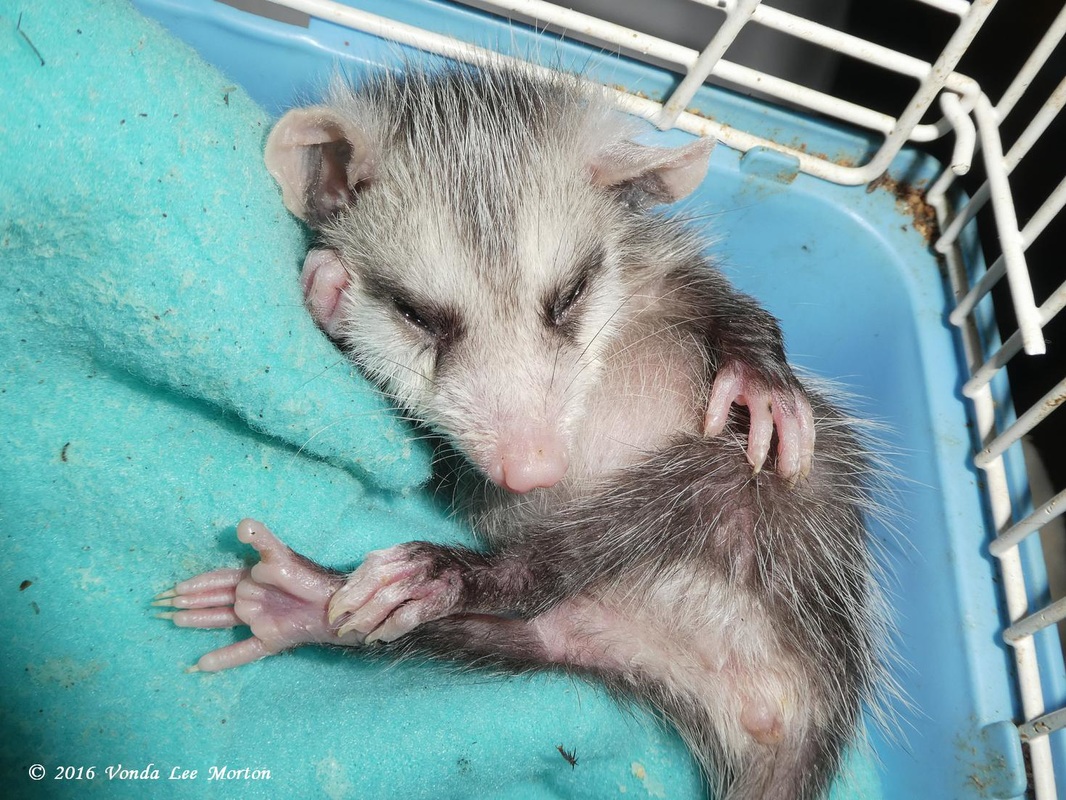

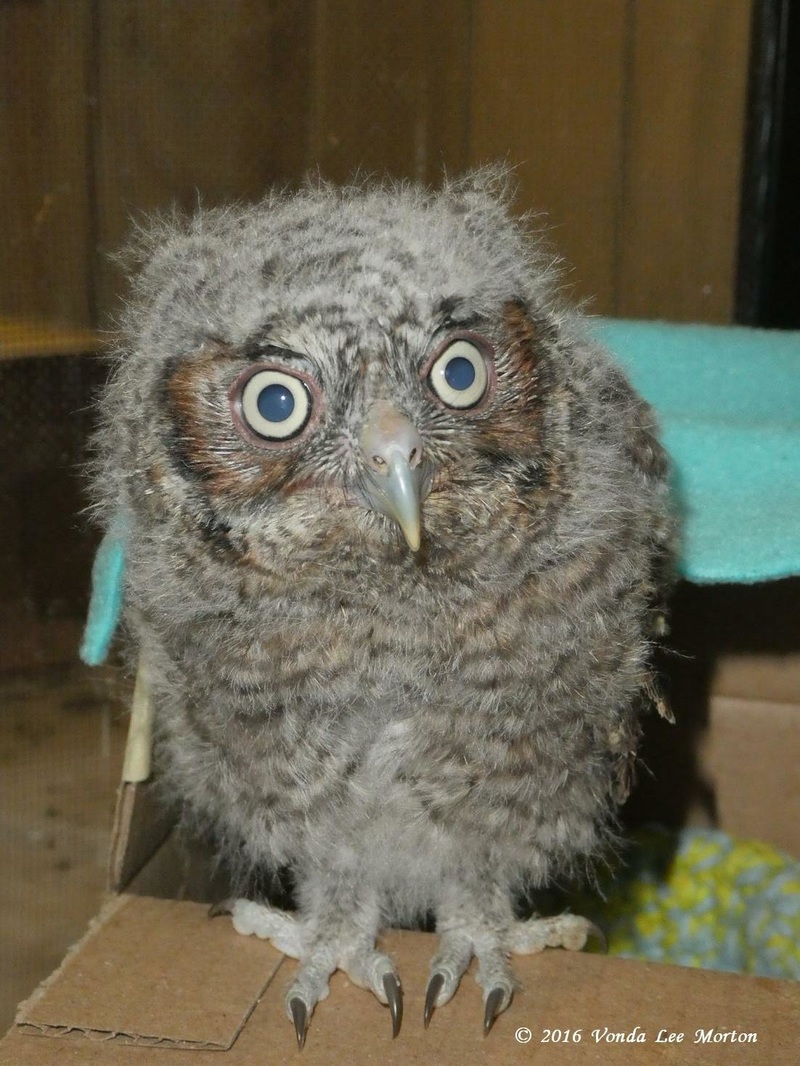


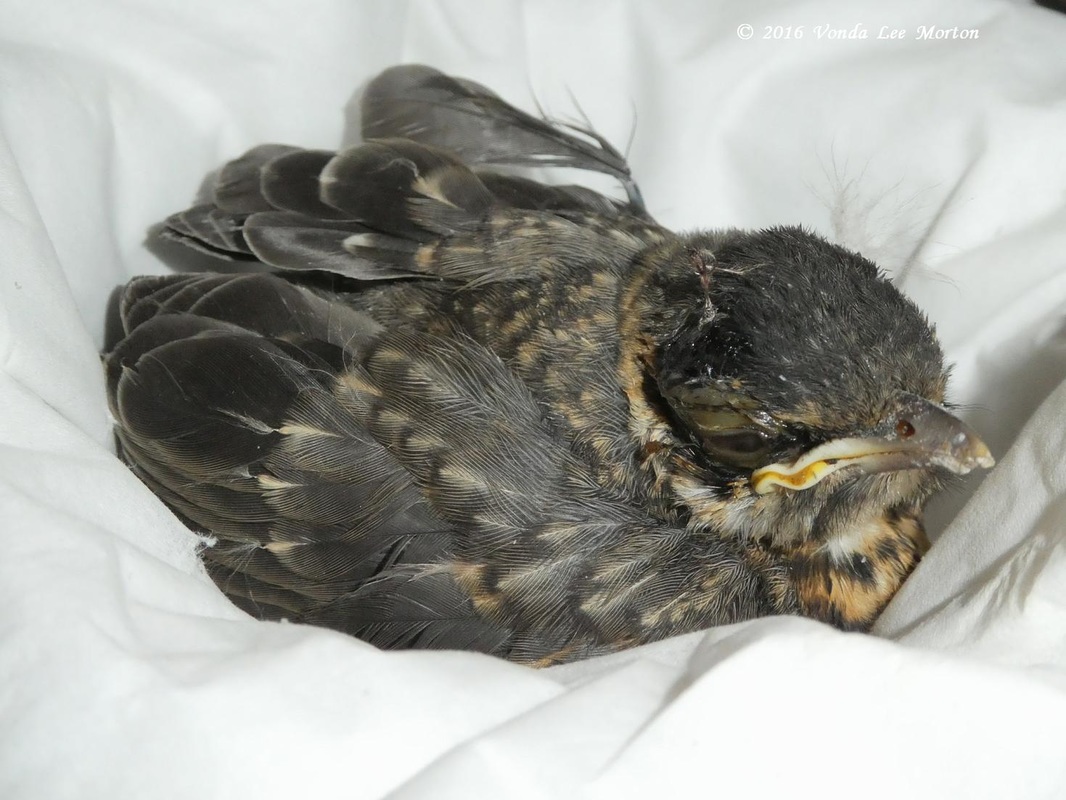

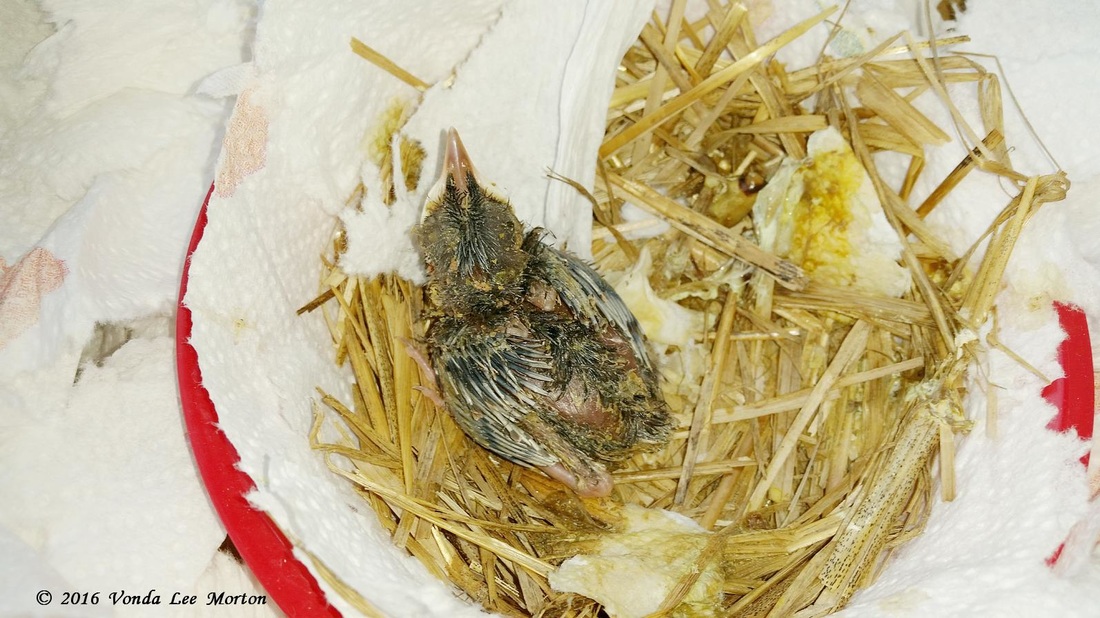


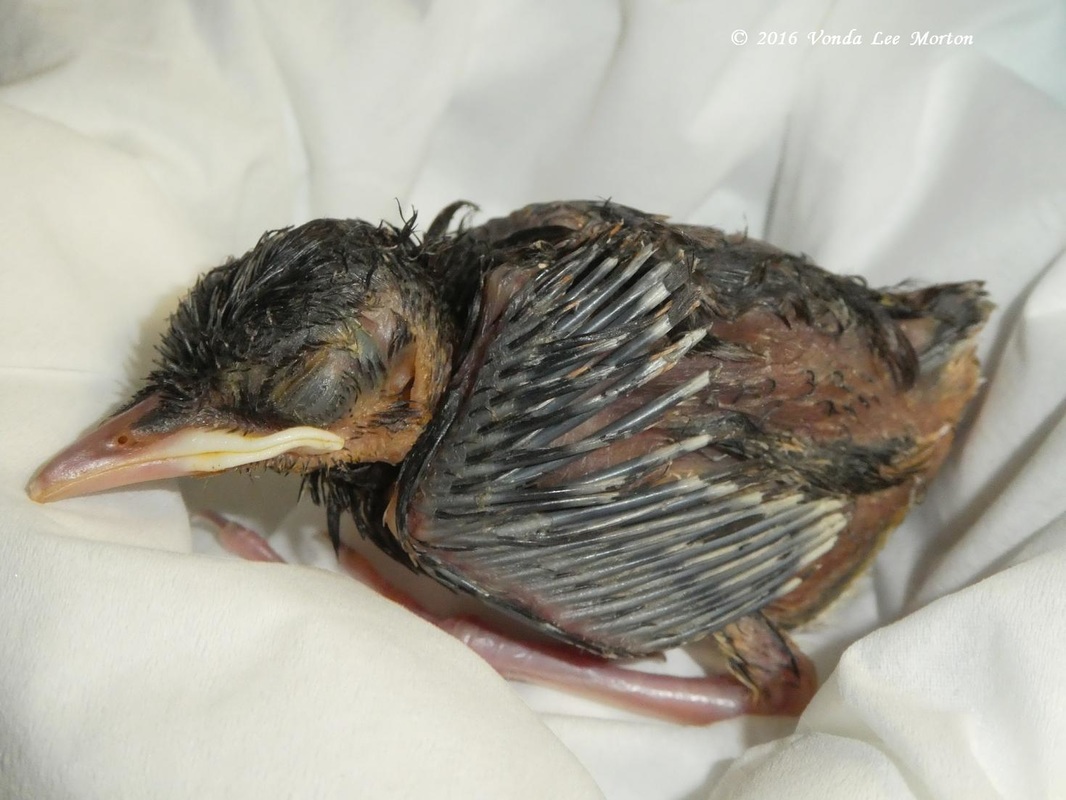





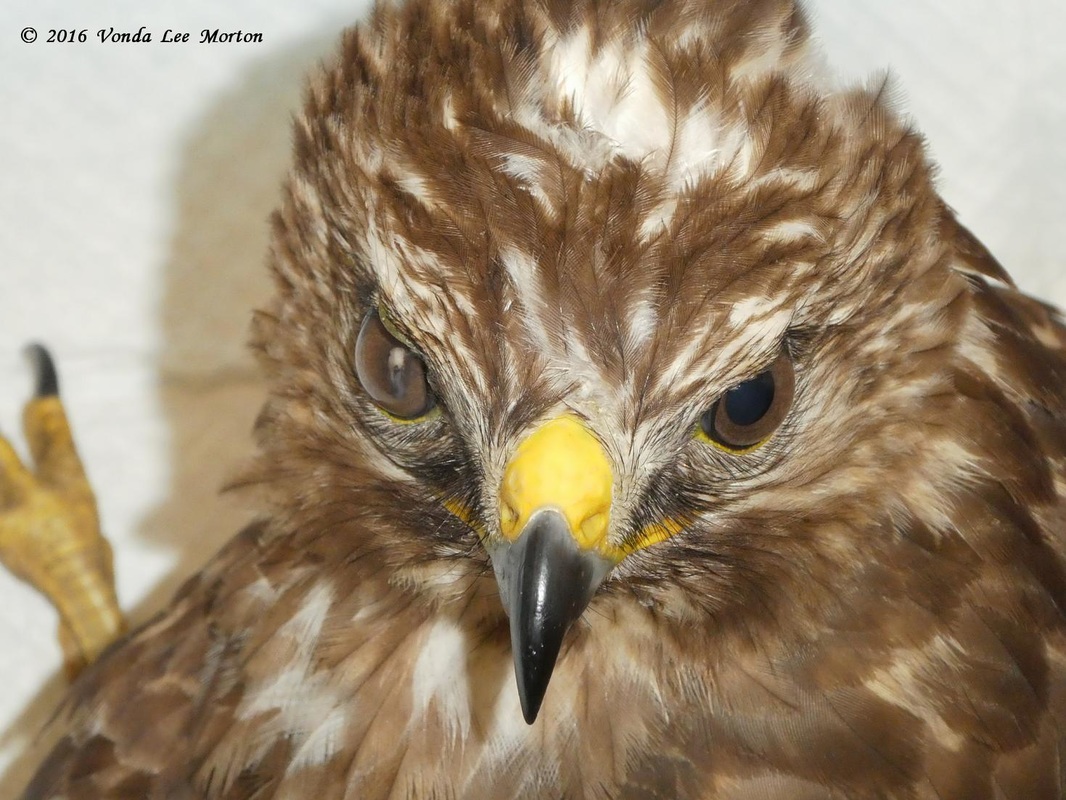












 RSS Feed
RSS Feed
